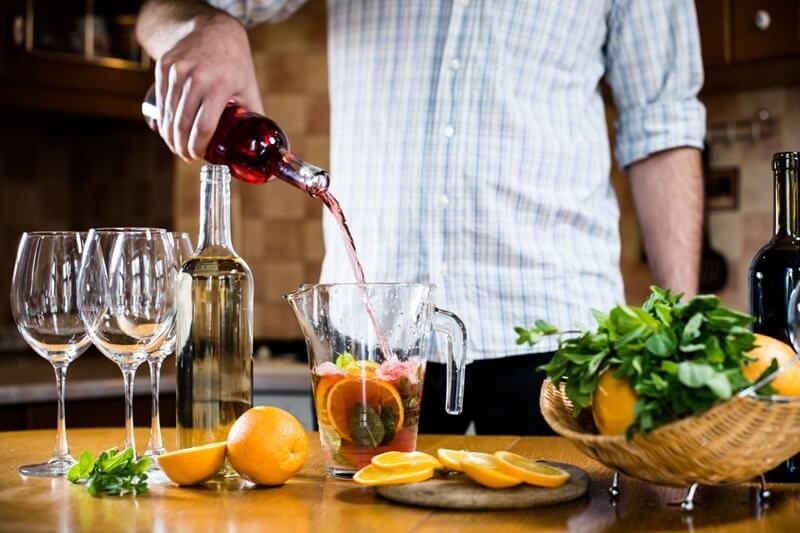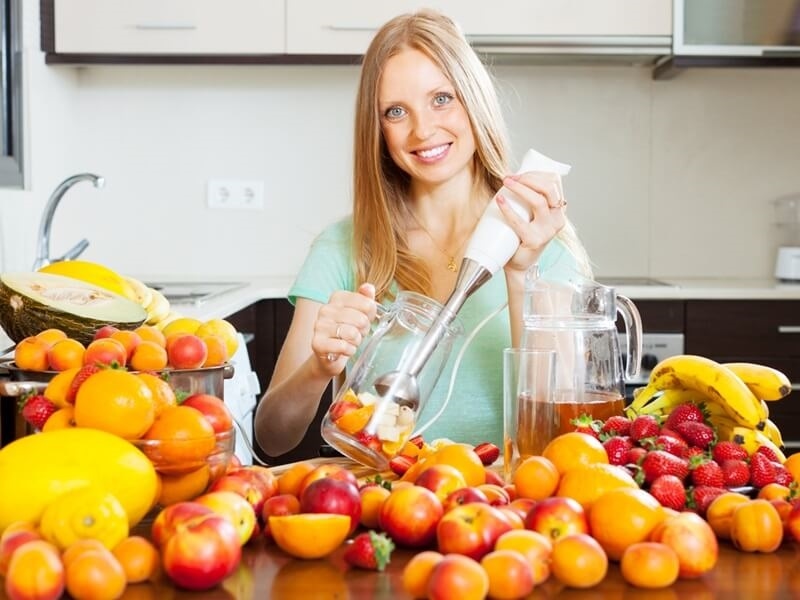
And when the summer heat hits its peak with sun-baked, warm days and balmy nights, nothing is as sweet as a cold glass of sangria. That old Spanish drink has been a staple around the United States for ages, not just because of the abundance of rich fruit taste, but also because it is so easily modified. From hosting a backyard barbecue to having a Sunday brunch or just needing something cool to drink, making sangria at home is easier than you think.
In this guide, we’ll break down the process step by step, cover the best sangria fruit mix, share tips on perfecting your summer sangria recipe, and explain how red wine sangria differs from other Spanish sangria variations. By the end, you’ll have all the know-how to whip up an easy sangria for beginners that tastes like it came straight from the Mediterranean coast.
At its most basic, sangria is a wine punch flavored with fresh fruit, a sweetener, and possibly a dash of liquor. It was created in Spain, where the earliest recipes have been in existence for centuries. The traditional recipes typically consist of red wine, citrus, and a dash of brandy. Yet through the centuries, sangria flourished into hundreds of forms that are made with white wine, sparkling wine, rosé, and even non-liquor bases.

To know the fundamentals of sangria makes it simple to prepare sangria at home since experimentation using a mix of fruits, wines, and flavors is possible without disrupting the stability of the drink.
For red wine sangria, the wine you use matters. You don't have to spend a fortune and buy the most expensive bottle, but you should steer clear of something too tannic or too sweet. Spanish wines like Garnacha or Tempranillo are timeless, but budget-friendly American reds like Merlot, Zinfandel, or Cabernet Sauvignon work beautifully too.
If you prefer lighter variations of Spanish sangria, you can utilize white wine or rosé for a less intense flavor. Alternatively, you can use sparkling wines if you prefer bubbles in your beverage.
Quick Tip: Utilize wines that are below $20 for quality and affordability.
One of the best things about preparing sangria at home is trying different combinations of fruit. The optimal combination of sangria fruit is citrus fruits such as oranges and lemons, which provide brightness and acidity. Apples bring texture, and berries are ideal for a sweetness explosion.
Here is a typical combination of fruits to begin with:
Oranges: Critical to authenticity and fresh taste.
Lemons or Limes: A splash of tartness.
Apples: Adds crisp sweetness.
Berries (strawberries, blueberries, raspberries): Summer bite.
Peaches or Pineapple: Tropical taste.
For the best balanced sangria fruit combination, utilize a minimum of three fruits, one citrus, one juicy, and one textured.
Traditional Spanish recipes typically include a dash of brandy thrown in, which provides depth of taste and reduces fruitiness. For more creative presentations, try rum, triple sec, or even specialty liqueurs like peach schnapps.
If you are preparing plain sangria for beginners, you can even leave the spirits out altogether for a milder rendition.
The sweetness of sangria may be supplied by several sources:
Sugar or Simple Syrup – easy dissolving.
Honey or Agave Syrup – adds natural sweetness.
Fruit Juice – orange juice is just one popular option.
To give it a bit of zing, top with club soda, ginger ale, or lemon-lime soda when serving. It is an optional step that enhances most summer sangria recipes by introducing more refreshment.
Patience is the secret to fantastic sangria. Store chilled in the refrigerator for at least 2 to 4 hours after preparation. The fruit will have time to steep into wine and become a balanced blend. Hosting an evening party, preparing the sangria beforehand at home overnight, yields the best taste.
Serve chilled in large glasses or pitchers, with plenty of fruit in each serving. Add ice cubes for extra coolness, and garnish with a sprig of mint for a refreshing finish.
If you’re new to sangria, you’ve probably heard that red wine is the “authentic” base. Here’s why:
Red wine sangria mentioned above, however, is not about rules but concord. Too astringent? Add fruit or soda. Too sweet? Balance with lemon wedges or club soda.
Throughout centuries, sangria diversified according to regional preferences. Some popular Spanish sangria variations are as follows:
Clásica (Red Sangria): Red wine, citrus, brandy, and apples.
Sangria Blanca: White wine base, peaches, pineapple, and lemon.
Cava Sangria: Sparkling Spanish cava, berries, and citrus.
Rosé Sangria: Floral, light, and perfect for brunch.
These Spanish sangria recipes show how adaptable the drink is. Once you master the basics of how to make sangria at home, you can experiment forever.
If you're making it for the first time, below is a tested and proven simple sangria for beginners recipe:
Ingredients:
Instructions:
This simple sangria for beginners will be restaurant-quality with little effort.
Summer and sangria go hand in hand. The sweet, refreshing flavor of the drink makes it a party favorite during outdoor gatherings. To elevate your summer sangria recipe:
While making sangria at home in the summer, remember freshness is paramount. Use only fresh fruits and never pre-sweetened wines, as it makes the drink over-sweet.
Though sangria is forgiving, there are a few mistakes that spoil the equation:
Cheap wine: Use good-quality bottles that are worth some bucks.
Skipping chill time: Don't rush—it's infusion that works the magic.
Too much sugar: Let the fruit be the prime source of sweetness.
Overloading fruits: Use 3–5 fruits maximum to avoid mixed flavors.
Avoiding these keeps your summer sangria recipe light, refreshing, and party-friendly.
Sangria pairs well with light, flavored food. Try the following:
This is ideal for parties where the drink shall be consumed with a high number of food options.
If you desire less fat in your drinks, healthier sangria can be enjoyed by:
These changes still let you enjoy keeping your easy sangria for beginners delicious without too many extra calories.
Sangria isn’t just a drink—it’s an experience. Whether you’re hosting a lively gathering or simply enjoying a quiet evening on the porch, making sangria at home is a fun, rewarding process. With the right wine, the best sangria fruit mix, and a little patience, you’ll have a pitcher full of refreshing magic.
From discovering red wine sangria to tasting Spanish alternatives to sangria and trying a beginner's simple sangria, this guide contains everything you'll need to create your own summer favorite sangria recipe.
The next occasion that the weather is warm and the climate craves something festive and fruity, pick up a bottle, slice up some fresh fruit, and get ready to prepare sangria in your very own kitchen—your friends (and your taste buds) will appreciate it.
This content was created by AI